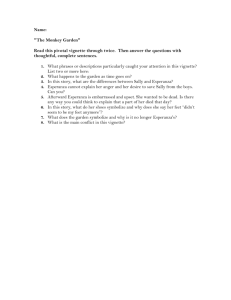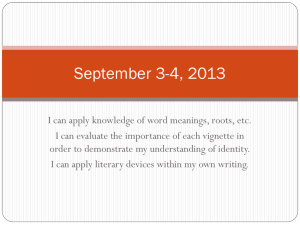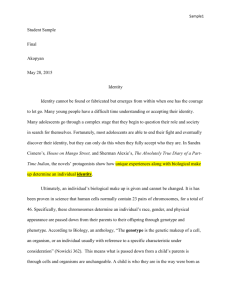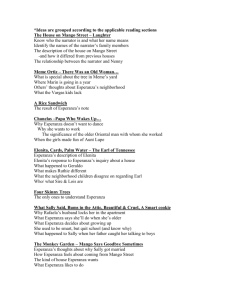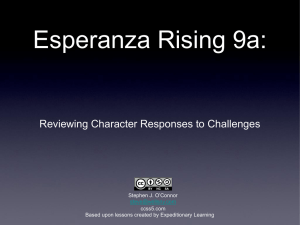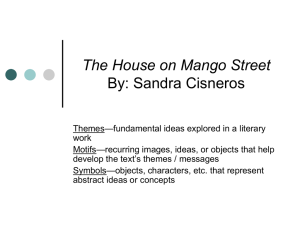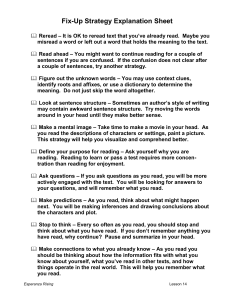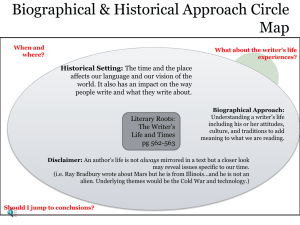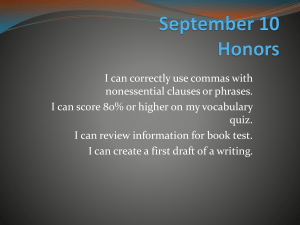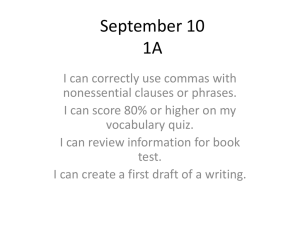THOMS analysis 76-110
advertisement
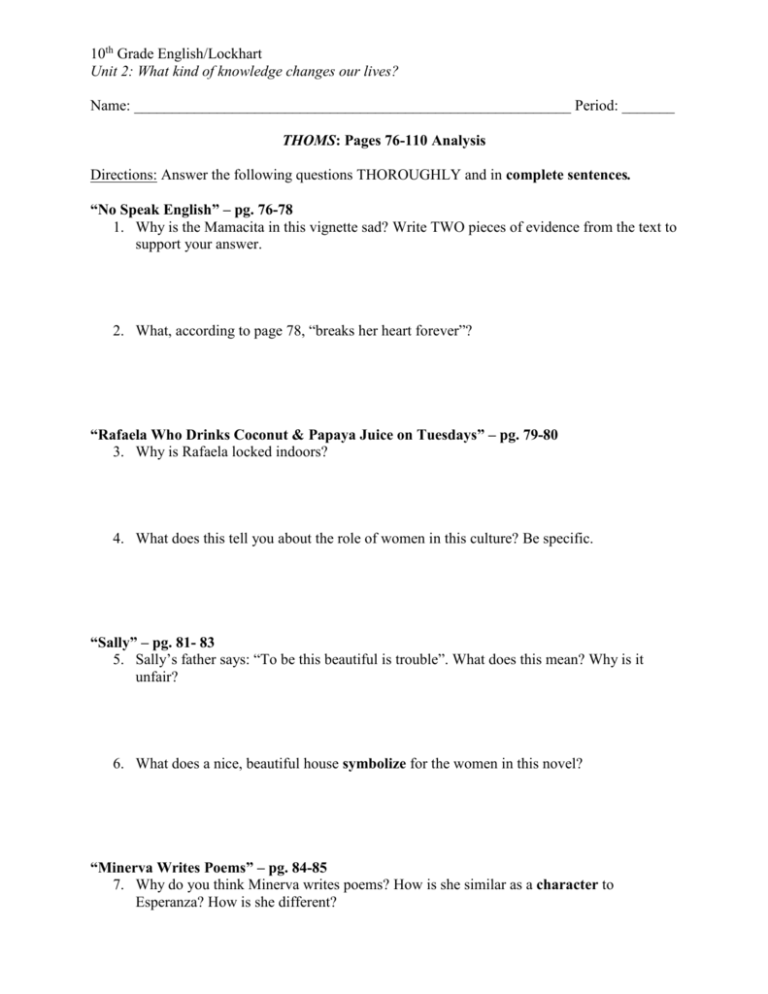
10th Grade English/Lockhart Unit 2: What kind of knowledge changes our lives? Name: __________________________________________________________ Period: _______ THOMS: Pages 76-110 Analysis Directions: Answer the following questions THOROUGHLY and in complete sentences. “No Speak English” – pg. 76-78 1. Why is the Mamacita in this vignette sad? Write TWO pieces of evidence from the text to support your answer. 2. What, according to page 78, “breaks her heart forever”? “Rafaela Who Drinks Coconut & Papaya Juice on Tuesdays” – pg. 79-80 3. Why is Rafaela locked indoors? 4. What does this tell you about the role of women in this culture? Be specific. “Sally” – pg. 81- 83 5. Sally’s father says: “To be this beautiful is trouble”. What does this mean? Why is it unfair? 6. What does a nice, beautiful house symbolize for the women in this novel? “Minerva Writes Poems” – pg. 84-85 7. Why do you think Minerva writes poems? How is she similar as a character to Esperanza? How is she different? 8. What connects and links these women from the last four vignettes? “Bums in the Attic” – pg. 86-87 9. What does Esperanza say that she will own someday? 10. How is Esperanza’s conclusion at the end of this vignette both kind and naïve? “Beautiful and Cruel” – pg. 88-89 11. Esperanza says: “I have begun my own quiet war… I am the one who leaves the table like a man, without putting back the chair or picking up the plate.” Why does this signify a change in Esperanza as a character? How is she different than other female characters we’ve read about? “A Smart Cookie” – pg. 90-91 12. Why is this vignette a cautionary tale (a tale written to provide a warning)? 13. Think back to the introduction of The House on Mango Street. How does this vignette provide some autobiographical information that connects well to Sandra Cisneros’s mother and her advice? “What Sally Said” – pg. 92-93 14. What do we learn about Sally’s home life in this vignette? “The Monkey Garden” – pg. 94-98 15. Summarize the major events of this vignette. 16. Analyze your summary. What is the conflict? Why is Esperanza upset? 17. Pick a symbol from this vignette and explain what it means. “Red Clowns” – pg. 99-100 18. How does this vignette show Esperanza dealing with the differences between expectations versus reality? 19. How and why is Esperanza different from Sally? “Linoleum Roses” – pg. 101-102 20. What is Sally’s fate? While marriage is initially looked at as a way out, what is the reality? “Three Sisters” – pg. 103-105 21. What wish do you think Esperanza made? 22. One of the sisters says, “When you leave you must remember to come back for the others. A circle, understand? You will always be Esperanza. You will always be Mango Street. You can’t erase what you know. You can’t forget who you are… You must remember to come back. For the ones who cannot leave as easily as you” (105). Who are some of the “others” that the sisters refer to? Why do they need Esperanza to come back for them? 23. How do you think the knowledge that the three sisters provide for Esperanza will change her life? “Alicia & I Talking on Edna’s Steps” – pg. 106-107 24. What does Alicia tell Esperanza about Mango Street? 25. If not the mayor, who is going to make Mango Street better? “A House of My Own” – pg. 108 26. What kinds of things will be in Esperanza’s house? 27. What is the significance of the simile in the second paragraph? 28. Think back to the introduction of The House on Mango Street again. How does this vignette connect to Cisneros? “Mango Says Goodbye Sometimes” – pg. 109-110 29. What is Esperanza’s plan? Write a piece of evidence from the text to support your answer. 30. What is the major conflict of this book? Explain.
